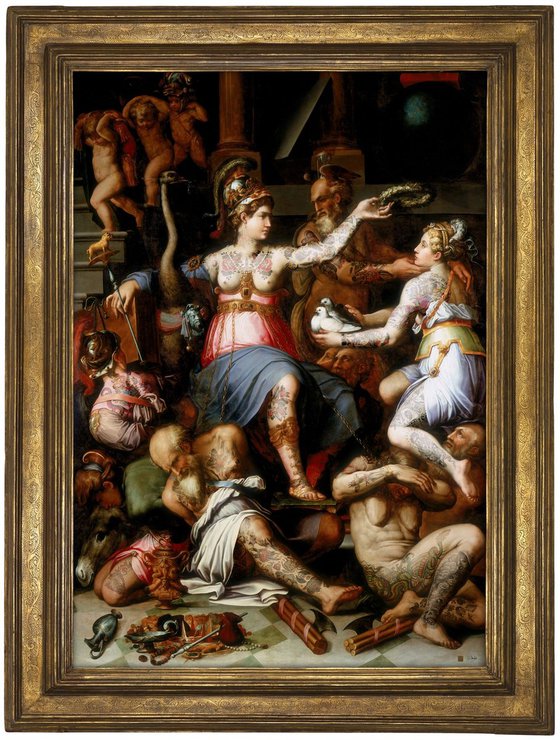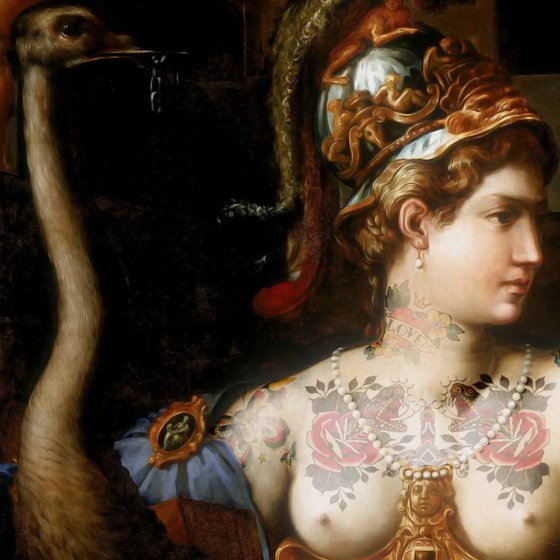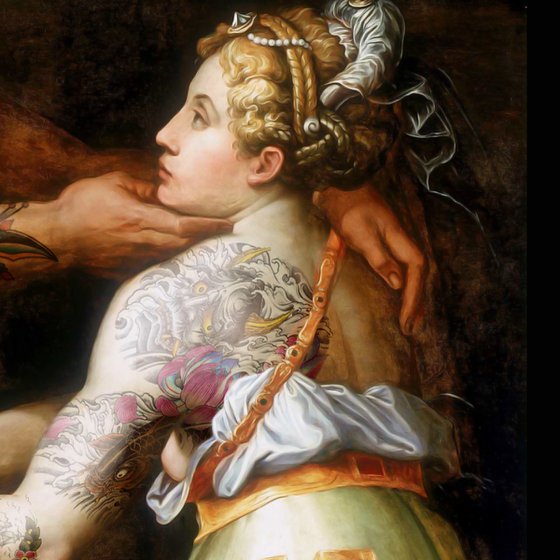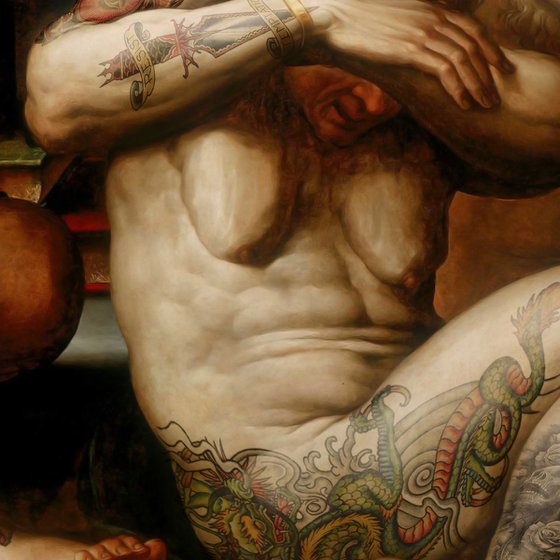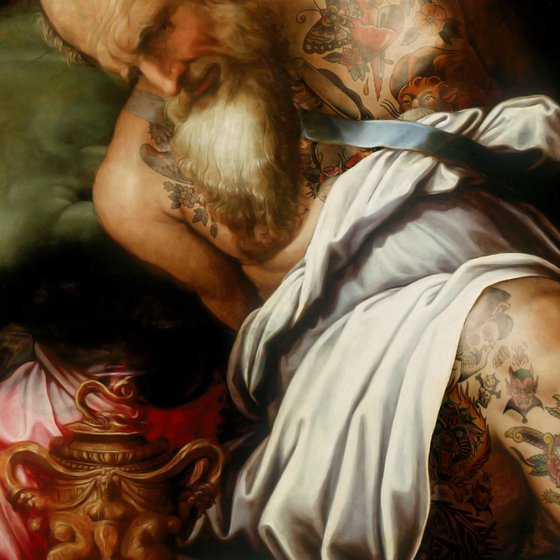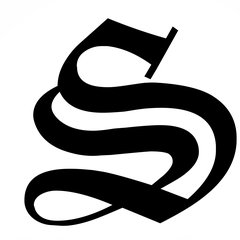- By medium
- By subject
- By budget
- Sales
- Gift cards
- Discover all art
- Artists
- Editors’ picks
- Ideas
Artwork description:
The work was commissioned on 6 January 1543 to Giorgio Vasari by Cardinal Alessandro Farnese, who wished an allegory to celebrate Justice: once completed, the table fully satisfied its client.
The painting decorated the first hall of the Chancellery's palace in Rome, later it was moved to Naples with the rest of the Farnese collection and finally found its definitive location in Room 2 of the National Museum of Capodimonte.
It is a complex iconography, suggested to Vasari by Paolo Giovio: at the center of the work is Giustizia, half-naked, embracing with the left arm an ostrich, animal that for its slowness and tenacity in digestion, symbolizes the patience to have in the various situations of daily life.
With his right hand he instead crowns the Truth: this, presented by Time, portrayed as a bearded old man, carries in his hands two doves, symbolizing innocence. Other symbols that are found in the main figure refer to themes present in the frescoes in the room of Constantine and in the funeral monument of Pope Adrian VI in the church of Santa Maria dell'Anima.
Attached with a leash to the Justice Belt are the seven vices that oppose it, namely Fear, Ignorance, Corruption, Cruelty, Deadness, Lie and Betrayal.
The variegated use of colors, almost metallic, refers to the painting of Michelangelo Buonarroti.
Printed on KI Picasso Canvas 350gsm and hand embellished.
Signed, numbered, and delivered with a certificate of authenticity.
Materials used:
canvas, ink pigments, resin,
Tags:
#vasari #classical #slasky #neourbanclassic® #tattoos #justice #mythsJustice (2018) Digital Art (Giclée)
by Slasky
132 Artist Reviews
£3,520.18 Sold
- Digital Art (Giclée) on Canvas
- From a limited edition of 1
- Size: 150 x 210 x 0.1cm (unframed) / 20 x 30cm (actual image size)
- Signed and numbered certificate of authenticity
- Style: Urban and Pop
- Subject: People and portraits
Do you like this artwork?
This artwork has sold, but the artist is accepting commission requests. Commissioning an artwork is easy and you get a perfectly personalised piece.
Loading
Artwork description
The work was commissioned on 6 January 1543 to Giorgio Vasari by Cardinal Alessandro Farnese, who wished an allegory to celebrate Justice: once completed, the table fully satisfied its client.
The painting decorated the first hall of the Chancellery's palace in Rome, later it was moved to Naples with the rest of the Farnese collection and finally found its definitive location in Room 2 of the National Museum of Capodimonte.
It is a complex iconography, suggested to Vasari by Paolo Giovio: at the center of the work is Giustizia, half-naked, embracing with the left arm an ostrich, animal that for its slowness and tenacity in digestion, symbolizes the patience to have in the various situations of daily life.
With his right hand he instead crowns the Truth: this, presented by Time, portrayed as a bearded old man, carries in his hands two doves, symbolizing innocence. Other symbols that are found in the main figure refer to themes present in the frescoes in the room of Constantine and in the funeral monument of Pope Adrian VI in the church of Santa Maria dell'Anima.
Attached with a leash to the Justice Belt are the seven vices that oppose it, namely Fear, Ignorance, Corruption, Cruelty, Deadness, Lie and Betrayal.
The variegated use of colors, almost metallic, refers to the painting of Michelangelo Buonarroti.
Printed on KI Picasso Canvas 350gsm and hand embellished.
Signed, numbered, and delivered with a certificate of authenticity.
Materials used:
canvas, ink pigments, resin,
Tags:
#vasari #classical #slasky #neourbanclassic® #tattoos #justice #myths14 day money back guaranteeLearn more
